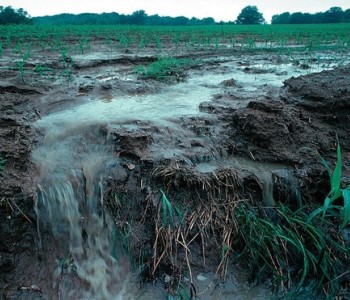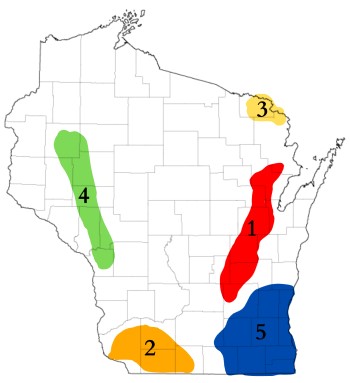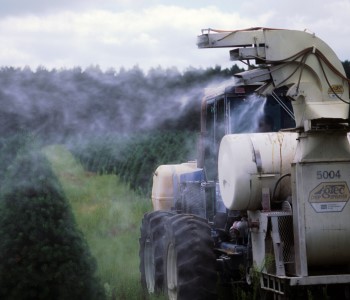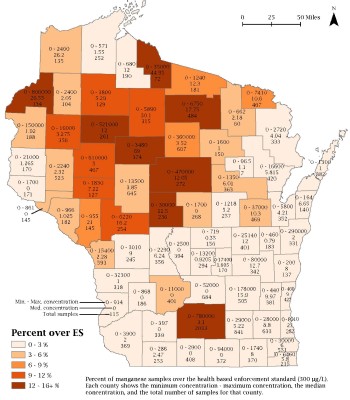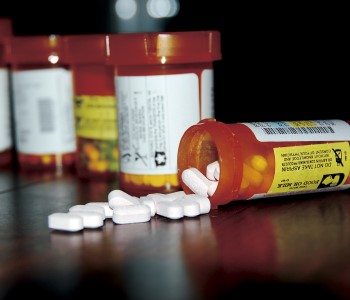Groundwater quality
GCC Report to the Legislature
Groundwater pollution from human activities and natural sources happens across Wisconsin. This is of particular concern for the 70% of Wisconsinites who get their drinking water from groundwater.
Other groups concerned about groundwater quality include farmers who rely on safe groundwater for crop and livestock production, and business owners who rely on groundwater for manufacturing and commerce. Lakes, rivers and streams are fed by groundwater. Fish and wildlife can't thrive when groundwater contaminants impact the surface water they are dependent upon.
We continue to learn more about groundwater quality in Wisconsin through research by collecting information about the occurrence of different substances found in groundwater and their impacts on human and environmental health.
Common Contaminants - Usually Acute Health Effects
Bacteria, Viruses And Other PathogensInfectious Disease. Pathogens are organisms or other agents that can cause disease, including microorganisms such as bacteria, viruses and protozoa that can cause waterborne disease. Groundwater contamination by microbial pathogens can sometimes be traced to human or livestock fecal waste that seeps into the ground from sources such as inappropriately constructed or failing septic systems, leaking sanitary sewers or improperly managed animal manure.
There are no specific groundwater quality standards for pathogenic microorganisms in Wisconsin, but there are groundwater standards in ch. NR 140 for total coliform bacteria and E. coli bacteria, both indicators of possible microbial pathogen contamination. |
Nitrateapplication on agricultural fields accounts for 90% of nitrate in our groundwater. / Photo Credit: USDA, NRCS. Nitrate is Wisconsin's most widespread groundwater contaminant and nitrate contamination of groundwater is increasing in the state. About 90% of nitrate in groundwater is due to agricultural inputs, including manure spreading and fertilizer application.
Nitrate contamination in Wisconsin’s groundwater is a serious problem that is harmful to both our health and the environment, so it's urgent to address this issue. |
Common Contaminants - Usually Chronic Health Effects
Arsenicnortheastern Wisconsin (regions 1 & 3), but is also found in other areas throughout the state (regions 2, 4 & 5). / Photo Credit: DNR. Arsenic is an odorless, tasteless and naturally occurring element present in soil and rock. Under certain environmental conditions, arsenic can dissolve and be transported in groundwater. It can also be released as a by-product from agricultural and industrial activities.
GCC member agencies and partners continue to proactively address arsenic concerns through well drilling advisories, health studies, well testing campaigns, studies aimed at improving geological understanding and developing practical treatment technologies. |
Pesticidestrees at tree farm near Wautoma. / Photo Credit: Wisconsin DNR Pesticides are a broad class of substances designed to kill, repel or otherwise disrupt living things that are considered pests. Normal field applications, spills, misuse or improper storage and disposal can all lead to pesticide contamination in groundwater.
In Wisconsin, the main source of pesticides in groundwater is agricultural herbicide and insecticide applications. A review of data revealed an increased occurrence of detections of neonicotinoid insecticides in samples collected from monitoring wells, irrigation wells, private wells and surface water samples. |
Naturally Occurring Elements, Including Chromium, Manganese, Radionuclides And Strontiumover the ch. NR 140 health based ES (300 mg/L). / Photo Credit: Wisconsin DNR. Naturally occurring elements, including radionuclides, chromium, manganese and strontium occur in Wisconsin groundwater, sometimes at concentrations that exceed health guidance levels.
Natural earth processes, such as rock weathering, soil erosion and mineral dissolution can cause trace elements to be released into groundwater. In areas where naturally occurring elements may be present in groundwater at levels close to, or above, health guidelines it is important to regularly test groundwater drinking water supplies to ensure that they are safe. |
Volatile Organic Compounds (VOCs)including paints, stains and paint thinners. / Photo Credit: Tom Murphy VII Volatile Organic Compounds (VOCs) are a group of common industrial and household chemicals that evaporate or volatilize when exposed to air. Examples of products containing VOCs include gasoline and industrial solvents, paints, paint thinners, air fresheners and household products such as spot and stain removers.
Improper handling or disposal of VOCs is often the reason why they appear in groundwater. Thousands of wells have been sampled for VOCs and about 60 different VOCs have been found in Wisconsin groundwater. Sources of VOCs in Wisconsin’s groundwater include landfills, underground storage tanks and hazardous substance spills. A critical role of GCC agencies is identifying and monitoring all known sources of VOCs, not only landfills. |
Additional Contaminants
Emerging Contaminantsone group of emerging contaminants. / Photo Credit: U.S. Department of Defense. Emerging contaminants are compounds that are increasingly being detected in groundwater and may have harmful human health or environmental impacts. Examples include pharmaceuticals and personal care products, PFAS, pesticides and microplastics.
Many, but not all, of these emerging contaminants enter the groundwater from wastewater or solid waste sources. Much is unknown about emerging contaminants in Wisconsin, so an important role of the GCC is to provide funding to support research studies that further scientific understanding of these substances and their occurrence, fate and transport in the groundwater environment. |
Perfluoroalkyl And Polyfluoroalkyl Substances (PFAS)Wisconsin DNR. PFAS are a large group of human-made chemicals that have been used in industry and consumer products worldwide since the 1940s. Their ability to repel water and oil and withstand high temperatures has made PFAS a useful ingredient in products including non-stick pans and water-repellent clothing. These chemicals do not easily break down in the environment and have been known to accumulate in the environment and humans.
PFAS chemicals have been found to be widespread in the environment. They have been detected in Wisconsin groundwater – at very high levels in some places. Humans may be exposed to PFAS in several ways, including drinking municipal or private well water contaminated by PFAS. |


